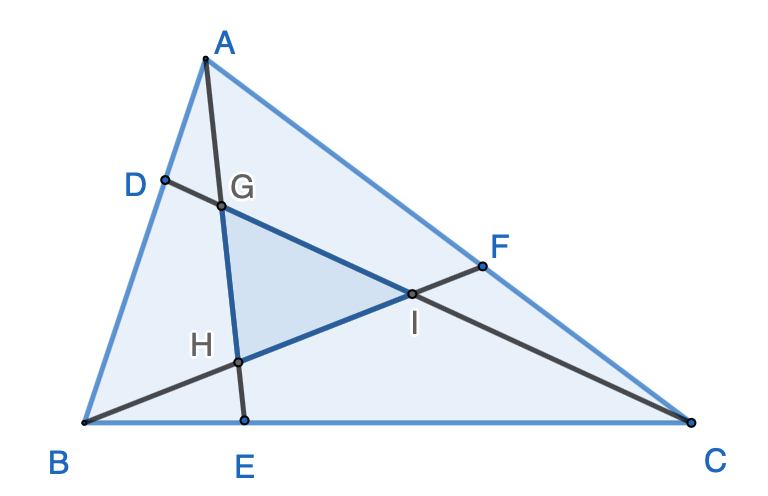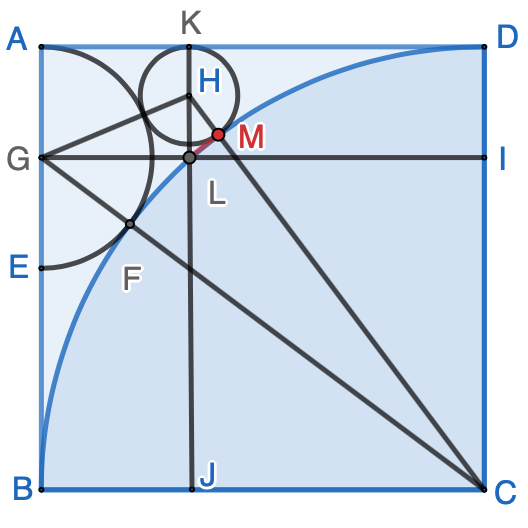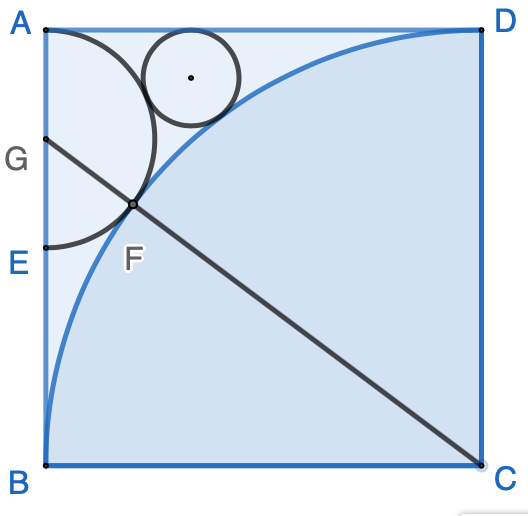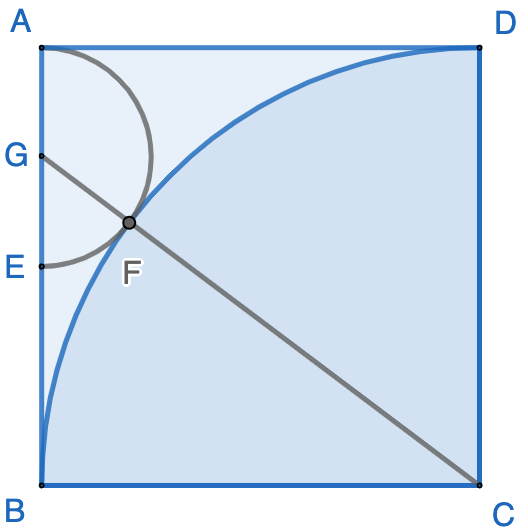Continue the topic of the previous post in this series, if we construct a semi-circle first, then a quarter circle, and finally a full circle, as the following, what the radius of the full circle?

The problem is harder than the previous one, but it is still solvable by following the same steps.

Obviously, the radius of the semi-circle is $\dfrac{1}{2}$. Assume radius of the quarter circle is $q$. According to Pythagoras theorem, $$(\overline{BF}+\overline{EF})^2=\overline{BK}^2+\overline{EK}^2$$ We have $$(q+\dfrac{1}{2})^2=(\dfrac{1}{2})^2+1^2$$ The above equation can be solved as $$q=\dfrac{\pm\sqrt{5}-1}{2}$$ Ignoring the negative $q$ value, we have $$q=\dfrac{\sqrt{5}-1}{2}$$ Let’s denote the radius of the full circle as $r$, and the length of line $\overline{IL}$ and $\overline{MK}$ as $t$. Since $\triangle{BIL}$ and $\triangle{EIM}$ are right triangles, we have $$(q+r)^2 = t^2 + (1-r)^2$$ $$(\dfrac{1}{2}+r)^2=(1-t)^2+(\dfrac{1}{2}-r)^2$$ The above equations can be solved as $$r=\dfrac{3-2\sqrt{2}}{3-\sqrt{5}}, \ \ \ t=\dfrac{2+\sqrt{2}-\sqrt{10}}{3-\sqrt{5}}$$ Simplifying the above values, we have the radius of the full circle as $$ r = \dfrac{9-6\sqrt{2}+3\sqrt{5}-2\sqrt{10}}{4} \approx 0.2245918095$$
To be continued…





